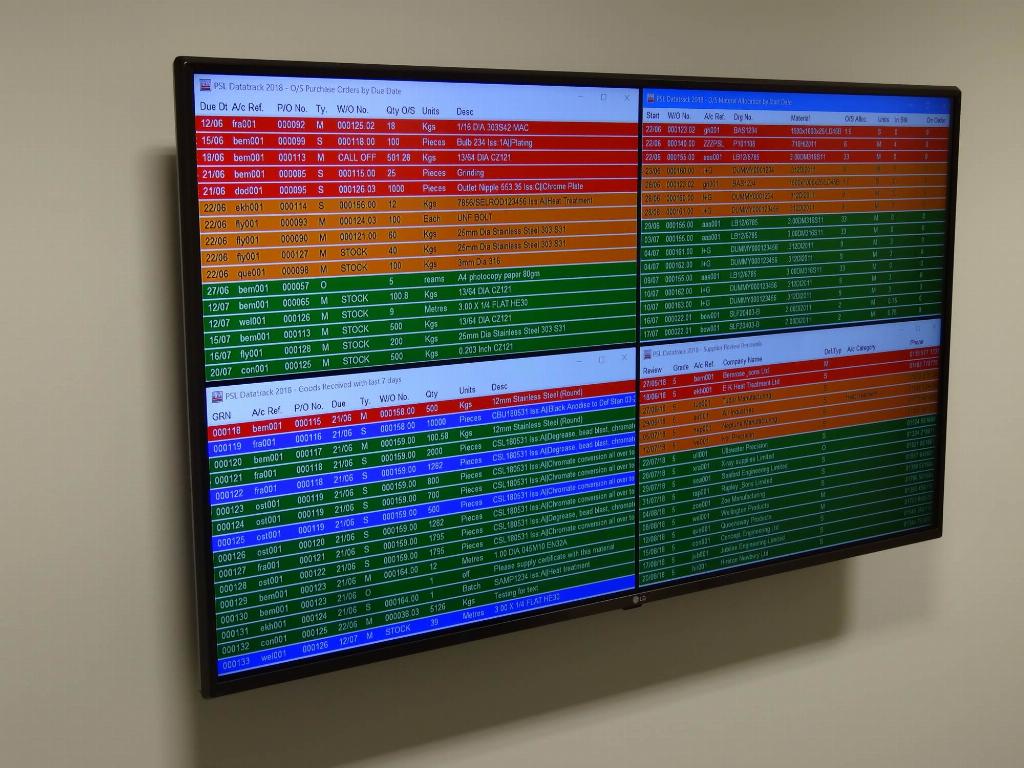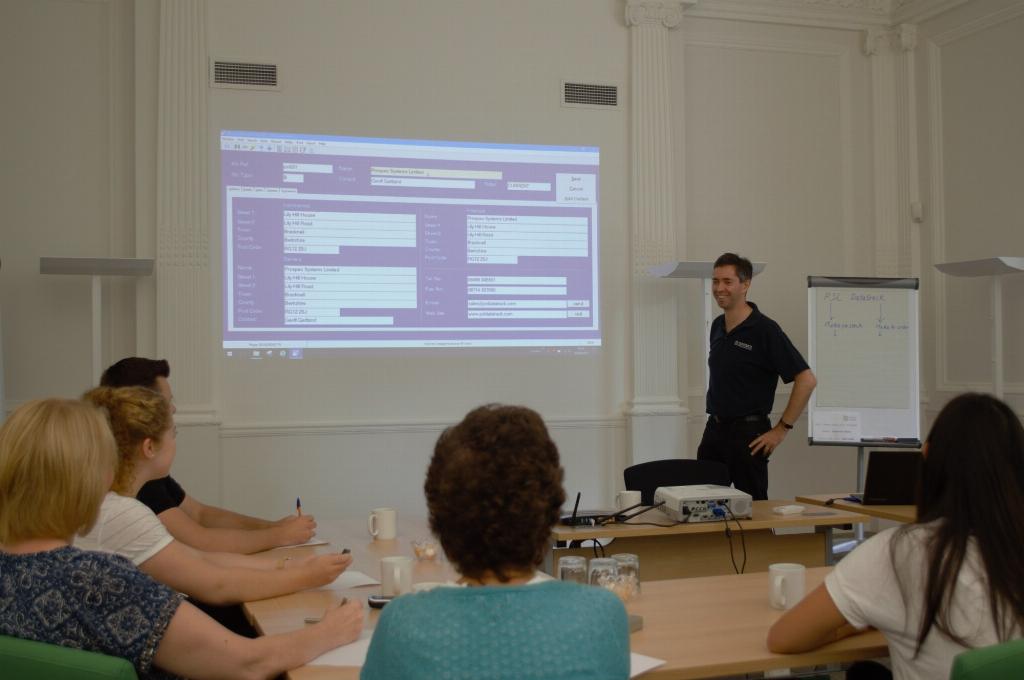July Cover Story: Made for manufacturers

There’s certainly no shortage of choice in the marketplace when it comes to production control software but one product that deserves to be near the top of any shortlist is PSL Datatrack from Prospec Systems – and that’s because since day one, from the ground up, it has been developed specifically to meet the needs of precision engineering companies. Dave Tudor reports.
Production Control/ERP/MRP software invokes mixed opinions: some companies embrace it whilst with others it simply doesn’t feature on the radar. There’s no doubt however that properly implemented, production control software can help run a business more efficiently, eliminate duplication of effort and ultimately improve profitability.
Choosing the right software is challenging simply because of the choice available but there are two clear points that definitely run in PSL Datatrack’s favour: firstly, its longevity – 2018 marks 30 years in business for the Bracknell, Berkshire-based company; and secondly, virtually all of PSL Datatrack’s customers are small to medium subcontract precision engineering enterprises so it’s well versed in providing solutions tailored to that market.
There is actually a third: 71% of PSL’s 130+ clients have been customers for more than five years, 50% for more than 10 years and there’s even one or two that have been using the software virtually since day one. Clearly there’s a high degree of customer satisfaction going on here.
Notably, the company has been a Technical Member of the British Turned Parts Manufacturing Association (BTMA) for 15 years and is also a member of the Gauge and Tool Maker’s Association (GTMA). In fact, five BTMA presidents (past and present) are PSL Datatrack users.
Complementary skillsets
Steering the ship is husband and wife team Geoff and Tara Gartland as managing director and finance director respectively. It was actually Tara’s father Jim Kelly who started the business way back in 1988 with Mr Gartland climbing aboard in 1995.
“Jim spent his entire career in engineering and worked for a number of machine tool companies,” Geoff Gartland explains. “He started PSL with the primary objective of helping SMEs use their equipment and resources more efficiently and ultimately become more profitable. Those principles still underpin everything we do today. The first incarnation of PSL Datatrack was purely a system for producing quotations but it soon developed to include order processing, raising delivery notes and invoicing.”
1995 was an important year for the business. Geoff Gartland joined the company and Windows 95 made its grand entrance signifying a whole new graphical approach to computing and the death knell for DOS. Mr Gartland’s skills and background were in IT which dovetailed well with Jim Kelly’s years of experience in engineering and manufacturing. Mr Kelly knew what SMEs needed from production control software; Mr Gartland turned that into reality with the first sale of PSL Datatrack production control software taking place in 1997. Fast forwarding, Geoff and Tara Gartland became sole owners of the business in 2013. The business today employs seven people.
There tends to be two distinct camps in the production control/ERP/MRP software market: those developers that provide the user with an entire system as a one size fits all package and those that prefer to offer modular-based solutions where customers only purchase the modules they need.
PSL falls squarely into the latter group. In terms of software design, Mr Gartland’s meticulous attention to detail stems from his early years working in the IT industry where mainframe computers were the order of the day.
“Everything back then was rigidly structured,” he says. “Software was designed, coded, proven and thoroughly tested before it was put into operation and that discipline has remained with me throughout my working life. PSL Datatrack is very simple to use and intuitive but underneath the bonnet, from a software design perspective, it’s stable, powerful, reliable and robust – and everything we’ve coded into the software is there for a reason.”

It all starts with the quotation
There are a number of optional modules in PSL Datatrack but the core product contains all the essential key elements that manufacturing companies will be familiar with. Just as the earliest versions of the software began with the quotation, this remains the starting point with the latest version.
“To produce an accurate quotation you need information on three things – your customers and suppliers, your machines, and the materials required,” Mr Gartland explains. “Off the back of the quotation hopefully a sales order is received from the customer which creates the demand for the necessary raw materials. These may be in stock, but if not, the system will prompt to create a purchase order to source from a supplier. The material is ordered (or taken from stock), received and booked in via Good Received to the Material Stock module which subsequently provides full traceability.
“Then a paper job card is produced which accompanies the job through the various stages of the manufacturing process providing details of the operations required and any additional information such as jigs, fixtures and special tooling. The job card will also contain instructions concerning any subcontracted operations such as heat treatment or plating that need to be carried out and raise the necessary purchase orders.
“Finally,” he continues, “after all operations are complete and the product has successfully passed quality control, a delivery note and a certificate of conformity are raised. The last part of the jigsaw is invoicing; PSL Datatrack integrates seamlessly with most accounting packages such as Sage.”
Simplifying scheduling
Known as the Sales and Purchase Order processing system, these modules provide the core elements of PSL Datatrack, but for businesses needing more control, a number of optional modules are available – such as Work in Progress and Scheduling.
“Scheduling scares some companies so we offer two levels: Work in Progress and full-blown Scheduling,” Mr Gartland affirms. “The former is ideal for providing a simple but accurate snapshot of how much work is in the system and the capacity required to fulfil it.
“Scheduling on the other hand is much more detailed. It’ll plan out Work To lists, highlight when a job will be completed, establish changeover points and determine where operational overlaps can be undertaken. It also offers forecasting capabilities which can help with capacity planning and resources such as planned overtime.”
Mr Gartland emphasises that if you’re running a Scheduler, it’ll be largely ineffective without the Shop Floor Data Collection module because it’s vital that all inputted data is current and accurate for meaningful scheduling to take place. PSL Datatrack incorporates the use of terminals on the shopfloor where operators can ‘log in’ to an operation and ‘log off’ once it’s complete via a barcode scanning system. An additional benefit is instant lookup where the current status of a particular works order is instantly available.
Additional modules available include: non-conformances (including supplier-based problems, in-house defects and customer complaints); Gauge Calibration (linkable to specific works orders to ensure full traceability); Tooling (monitoring usage to provide forecasting data of when specific tooling will be required); and a Task Module that handles any necessary tasks not directly related to production. This could be something like a stock take, ISO 9000 audit or planned machine maintenance.
There are a number of ancillary modules but it’s important to remember that PSL Datatrack is highly configurable and customisable and every installation – and hence the training – is bespoke. The cost of the software is based on the number of modules required and the number of licences needed. It’s a fair system – you only pay for what you need.
“Another option with PSL Datatrack that many of our customers use to good effect are Status Boards,” Mr Gartland advises. “Basically, these are TV screens strategically placed around the factory and office areas to graphically display real-time operational data. The information displayed could literally be anything captured by the software, but typically they are used to display a work to list or the status of a particular works order in real-time.

As you wish
Like most software-based products, PSL Datatrack is constantly evolving through ongoing updates and enhancements, but a differentiating factor is that users have a direct say in what improvements they’d like to see implemented in future revisions via the Wishlist system.
“We obviously have our own ideas about how the software can be improved but we also encourage our customers to have their say in what functionality they’d like to see,” Mr Gartland explains. “Every Wishlist request is logged on a database against the customer name and the relevant module. We then assess each request and assign a priority.
“We take all Wishlist requests seriously and we don’t necessarily need hundreds of separate requests to initiate a change,” he continues. “If we believe it will benefit the customer concerned – and hopefully other users – we’ll instigate a change from a single request. There’s no ‘action’ threshold’ that needs to be reached before we implement a software improvement.”
It’s difficult if not impossible to put a value on production control software and how much it can save a company in monetary terms but in Datatrack’s case one of its customers made a pretty commendable attempt.
He stated that if his company didn’t have PSL Datatrack, he would need to employ two additional admin staff. Conservatively, even if the two individuals only worked part-time, that would still equate to around £25,000 a year. Food for thought.
PSL Datatrack www.psldatatrack.com














